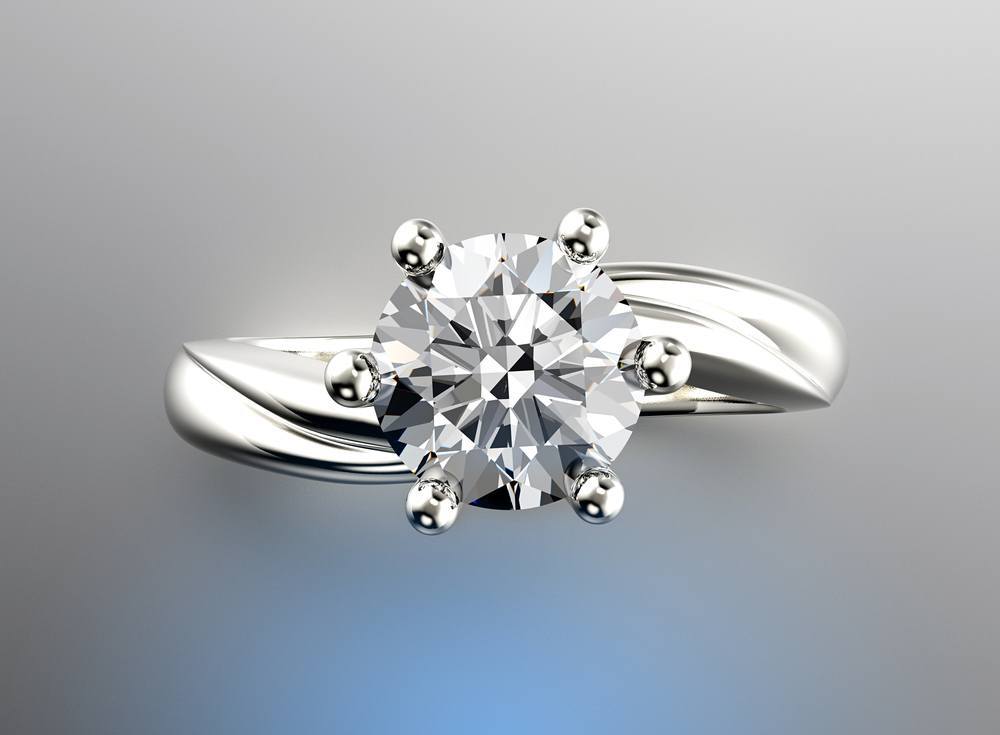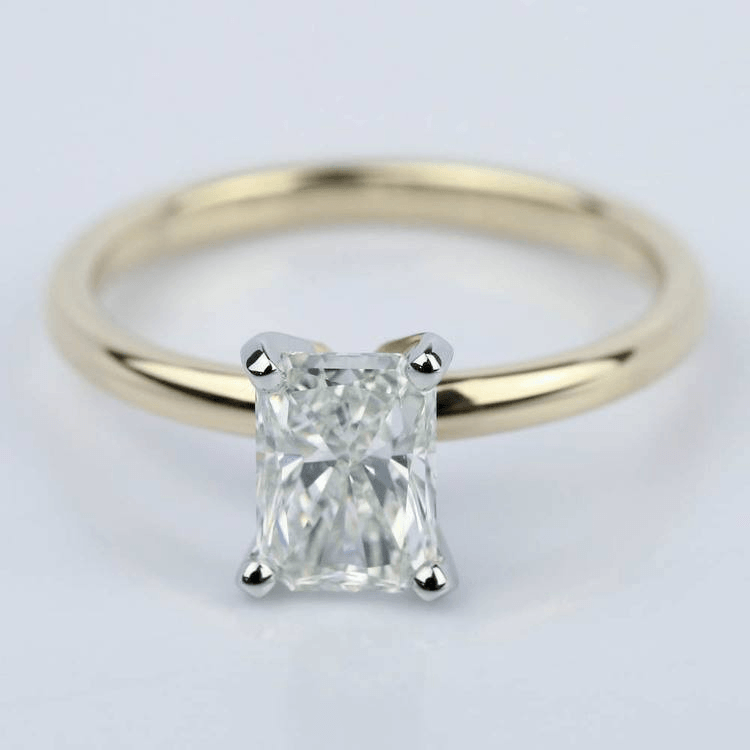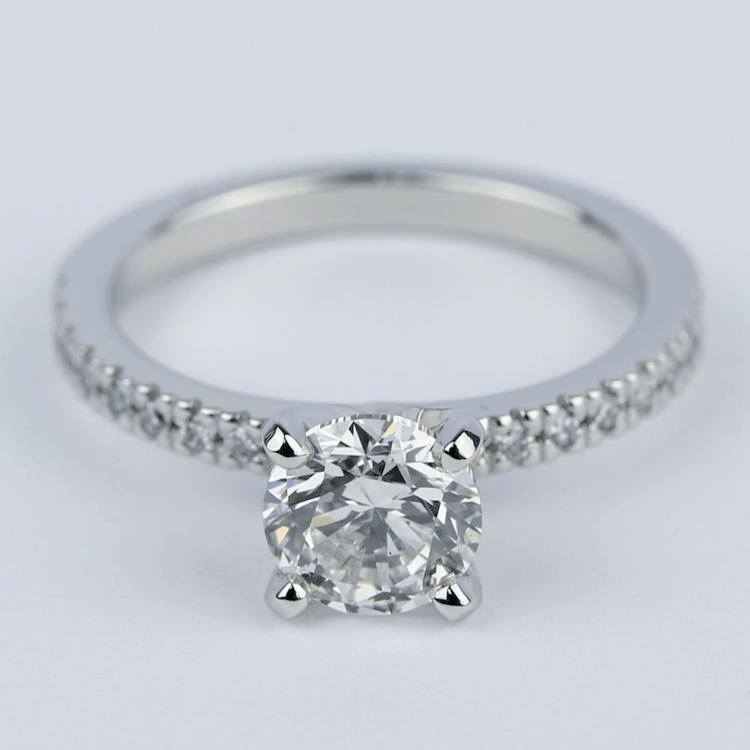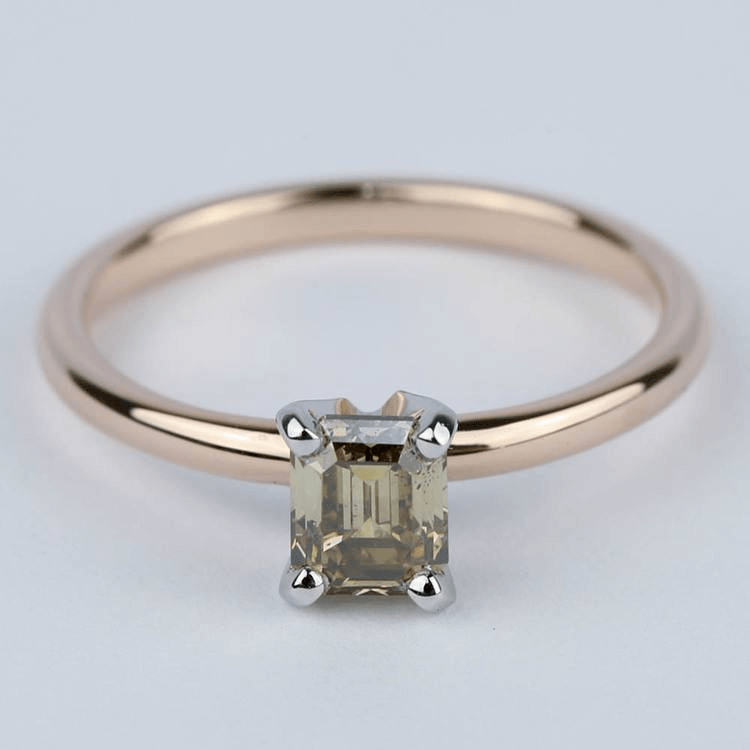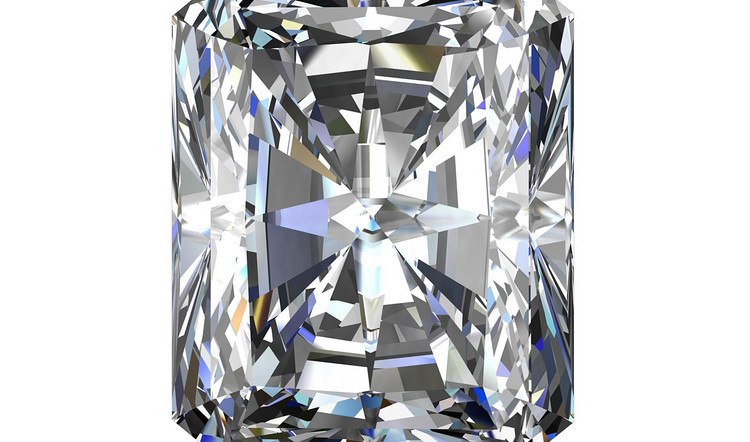An engagement ring is one of the most important pieces of jewelry a woman will ever own. The fact that it is purchased without our help can seem like a daunting task for the lucky man in our lives. So, let me start here. Guys, you cannot go wrong with a 1 carat diamond! When set in a diamond ring, a single carat is large enough to make an impression, without overwhelming the finger. No matter the setting or the shape, a 1 carat diamond will never let her down. Naturally, your next question will be, “How much is a 1 carat diamond?”
While there are many factors that determine the value of a loose diamond, shape, color, clarity, and carat have the largest impact on the overall price.
Diamond Shape
Not to be confused with cut, the shape of the diamond is what form it takes. The shape of a diamond is a defining characteristic since the contours and outlines have a significant impact on a diamond’s appearance. The most popular shapes for engagement rings are round brilliant, pear, marquise, heart, Asscher, emerald, cushion, princess, oval and radiant. The cost of each diamond shape depends on the demand and popularity of the shape and how costly it is to cut a diamond into that shape.
1 Carat Radiant Engagement Ring in Yellow Gold
The round diamond has been long sought after due to its light refraction properties and unrivaled brilliance. Round diamonds tend to lose more carat weight during cutting and processing than other shapes, often making this shape more expensive. If her heart is set on a round 1 carat diamond, you can expect to pay between $3,500-$5,500. Conversely, princess diamonds tend to be less costly, as they retain more carat weight during the cutting process. The typical price range for a 1 carat princess cut would be between $3,000-$4,500 (a savings of 15-30%). While the princess cut is relatively new, it is often desired due to the unique cutting and polishing techniques that hide inclusions and show color more clearly.
If you are looking for a more classic diamond shape, the emerald cut diamond is calling your name. Similar to princess cut, an emerald diamond loses minimal carat weight during cutting. This allows you to get a beautiful diamond at a lower price! Keep in mind that the emerald diamond’s large step facets make inclusions easier to detect, which can call for a higher grade of clarity.
If an emerald cut diamond speaks to you, you should expect to spend between $2,750-$4,350 for a 1 carat. (Significant savings compared to a round cut diamond!)
To learn more about the most popular diamond shapes, check out our Diamond Shape Guide.
Diamond Cut
The cut of the diamond is a rating of the craftsmanship involved in turning a stone from a rough diamond into a polished diamond. The diamond’s symmetry, depth, and other proportions determine the cut grade, and the cut affects how the diamond reflects light. A high-quality cut is brilliant, while a poor cut may result in a duller diamond.
The specific cut of different shapes also affects the overall beauty of a diamond. For instance, if a marquise is cut too narrow, it looks skinny and ‘malnourished.’ A heart that’s cut too wide with not enough edging in the bridges looks too much like a round stone and loses the appeal of the heart.
1 Carat Diamond Ring with Platinum Pave Setting
Cut is important to a diamond’s value and beauty, and poor cuts negatively affect the price. So if color and clarity are graded high, but the stone is still a super deal, make sure the cut is up to snuff. Cut is the one area that we never recommend sacrificing in order to get a better size, as the cut has the most direct impact on the light performance and characteristic beauty of a diamond. That’s why we called ourselves Brilliance.
Diamond Color
Some buyers opt for lower color grades so that they can get a larger carat stone. But, color is an important factor when shopping for a diamond, as it is noticeable to the unaided eye. The most valuable diamonds have little to no detectable color, which will reflect the different spectrums of light like fire. The Diamond Color Scale is ranked from D to Z, with “D” being colorless. While the presence of color will decrease a stone’s value, it does not mean that stone won’t exude brilliance! Going with a near colorless diamond (G through J in color) can save you thousands on the perfect ring. With all other factors being equal, you can save 30-55% on the cost of a 1 carat diamond that is in the near-colorless family (G-J) versus a colorless diamond (D-F).
Fancy Brown Emerald Diamond Engagement Ring
A quick tip when it comes to color: A yellow gold or rose gold setting will work well in hiding the yellow tint of diamonds with lower color grades. For some, that slightly yellow or even brownish color may have a vintage appeal. Many buyers, however, want a crisp white stone, which means paying more for a higher color grade. On the other end of the spectrum are fancy color diamonds, which have such a deep color that they actually cost more.
Diamond Clarity
Once you are comfortable with the shape and color of your diamond, you need to decide on the clarity. The clarity of a diamond indicates the presence or absence of inclusions and blemishes within the stone. Almost all diamonds have some sort of internal flaw when viewed under magnification. Flawless stones do exist—and their price tags reflect their rarity.
Just like color, clarity has a scale, ranging from Flawless (FL-IF) to Included (I1-I3). Included clarity grades (I1, I2 or I3) contain flaws that are visible to the naked eye. These stones are not what jewelers consider “eye clean.” They may be incredibly cloudy and feature visible nicks or other flaws. Although these diamonds are priced lower than those with higher clarity grades, if the flaws of the stone are visible to you, the low price might not be that much of a “steal.”For this reason, it is best to avoid diamonds with clarity grades in this range.
Those of you looking for a high quality diamond without the high price should look to the VS (Very Slightly Included) clarity range. VS diamonds will contain inclusions that are not detectable to the unaided eye. This clarity grade is ideal for diamonds with step-faceting. However, it is possible to go lower on the clarity scale for diamonds that have brilliant-cut facets. A brilliant cut disperses more light throughout the diamond, hiding the inclusions. Therefore, the budget-minded man can save a bundle by going with a brilliant-cut diamond that has slight inclusions. SI1, SI2, and SI3 (Slightly Included) are your best bet to save money while keeping a high-quality diamond.
Still not clear on clarity? Check out our Diamond Clarity Guide.
Diamond Carat
Now, we are back to our original question: How much does a 1 carat diamond cost? Diamond carat can be deceiving because it does not indicate the actual dimensions or millimeter size of a stone. For example, a 1 carat marquise or oval cut diamond may appear larger than a 1 carat round diamond due to its elongated shape. While they both may weigh 1 carat, the elongated shape creates an illusion of a bigger diamond. Choosing a diamond shape that is elongated can save you 20-35% on the price of the stone! In addition, opting for a diamond just under 1 carat can also save you thousands. For example, a 0.92 carat diamond could be the same size (millimeter dimensions) or bigger than a similar quality 1 carat depending on the depth of the stone.
Questions? Call 866-737-0754 to speak with a diamond expert now.
Lastly, you should also consider her finger size. A finger size 5 will make a 1 carat diamond appear bigger than if it was set on a finger size 8 for example. To see an exact sizing chart based on diamond shape, check out the Diamond Carat Guide. This amazing guide shows the measurements of a diamond based on the carat and shape!
As you can see, there is no simple price formula for a diamond. Each stone is unique, and the price tag reflects the individuality of each stone—for better or worse. When selecting your perfect one-carat diamond, review these other factors to decide which stone fits your idea of perfection and your budget.

